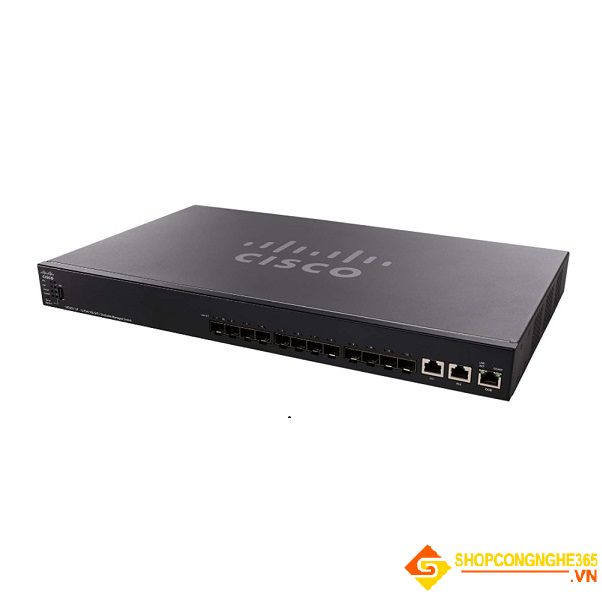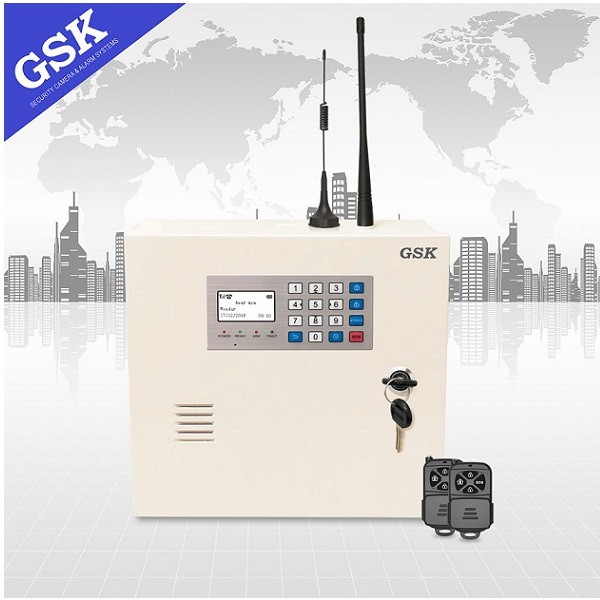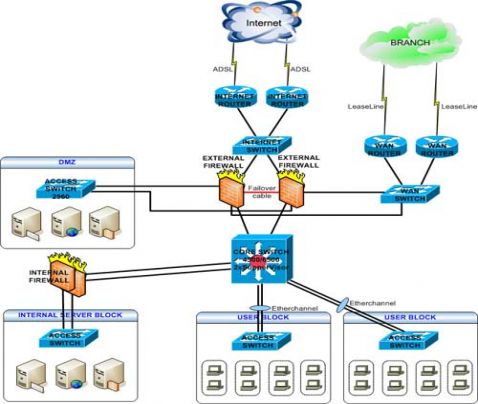| Model |
SX550X-12F-K9-EU |
| Performance |
| Switching capacity and forwarding rate |
Capacity in mpps (64-byte packets): 178.56 |
| Switching capacity (Gbps): 240 |
| Layer 2 switching |
| Spanning Tree Protocol |
Standard 802.1d spanning tree support
Fast convergence using 802.1w (Rapid Spanning Tree [RSTP]), enabled by default
Multiple spanning tree instances using 802.1s (MSTP); 16 instances are supported
Per-VLAN Spanning Tree Plus (PVST+) and Rapid PVST+ (RPVST+); 126 instances are supported |
| Port grouping/link aggregation |
Support for IEEE 802.3ad Link Aggregation Control Protocol (LACP)
- Up to 32 groups
- Up to 8 ports per group with 16 candidate ports for each (dynamic) 802.3ad LAG |
| VLAN |
Support for up to 4,094 active VLANs simultaneously; port-based and 802.1Q tag-based VLANs; MAC-based VLAN
Management VLAN
Private VLAN with promiscuous, isolated, and community port
Guest VLAN, unauthenticated VLAN, protocol-based VLAN, IP subnet-based VLAN, CPE VLAN
Dynamic VLAN assignment using RADIUS server along with 802.1x client authentication |
| Voice VLAN |
Voice traffic is automatically assigned to a voice-specific VLAN and treated with appropriate levels of QoS. Auto voice capabilities deliver networkwide zero-touch deployment of voice endpoints and call control devices |
| Multicast TV VLAN |
Multicast TV VLAN allows the single multicast VLAN to be shared in the network while subscribers remain in separate VLANs. This feature is also known as Multicast VLAN Registration (MVR) |
| VLAN translation |
Support for VLAN One-to-One Mapping. In VLAN One-to-One Mapping, on an edge interface C-VLANs are mapped to S-VLANs and the original C-VLAN tags are replaced by the specified S-VLAN |
| Q-in-Q |
VLANs transparently cross over a service provider network while isolating traffic among customers |
| Selective Q-in-Q |
Selective Q-in-Q is an enhancement to the basic Q-in-Q feature and provides, per edge interface, multiple mappings of different C-VLANs to separate S- VLANs
Selective Q-in-Q also allows configuring of Ethertype (TPID) of the S-VLAN tag
Layer 2 protocol tunneling over Q-in-Q is also supported |
| GVRP/GARP |
Generic VLAN Registration Protocol (GVRP) and Generic Attribute Registration Protocol (GARP) enable automatic propagation and configuration of VLANs in a bridged domain |
| Unidirectional Link Detection (UDLD) |
UDLD monitors physical connection to detect unidirectional links caused by incorrect wiring or port faults to prevent forwarding loops and blackholing of traffic in switched networks |
| DHCP relay at Layer 2 |
Relay of DHCP traffic to DHCP server in a different VLAN. Works with DHCP option 82 |
| IGMP (versions 1, 2, and 3) snooping |
Internet Group Management Protocol (IGMP) limits bandwidth-intensive multicast traffic to only the requesters; supports 4K multicast groups (source-specific multicasting is also supported) |
| IGMP querier |
IGMP querier is used to support a Layer 2 multicast domain of snooping switches in the absence of a multicast router |
| HOL blocking |
Head-Of-Line (HOL) blocking |
| Loopback Detection |
Loopback detection provides protection against loops by transmitting loop protocol packets out of ports on which loop protection has been enabled. It operates independently of STP |
| Layer 3 |
| IPv4 routing |
Wirespeed routing of IPv4 packets
Up to 7,168 routes and up to 256 IP interfaces |
| Wirespeed IPv6 static routing |
Up to 1,792 routes and up to 256 IPv6 interfaces |
| Layer 3 interface |
Configuration of Layer 3 interface on physical port, LAG, VLAN interface, or loopback interface |
| CIDR |
Support for classless interdomain routing |
| RIP v2 |
Support for Routing Information Protocol version 2 for dynamic routing |
| VRRP |
Virtual Router Redundancy Protocol (VRRP) delivers improved availability in a Layer 3 network by providing redundancy of the default gateway servicing hosts on the network. VRRP versions 2 and 3 are supported. Up to 255 virtual routers are supported |
| Policy-Based Routing (PBR) |
Flexible routing control to direct packets to different next hop based on IPv4 or IPv6 ACL |
| IP Service-Level Agreement (SLA) object tracking |
IP SLA object tracking relies on IP SLA ICMP echo operation to detect connectivity to a certain network destination
IP SLA object tracking for VRRP provides a mechanism to track the connectivity to the VRRP router default route next hop
IP SLA object tracking for static routes provides a mechanism to track the connectivity to the destination network via the next hop specified in the static route |
| DHCP server |
Switch functions as an IPv4 DHCP server serving IP addresses for multiple DHCP pools/scopes
Support for DHCP options |
| DHCP relay at Layer 3 |
Relay of DHCP traffic across IP domains |
| User Datagram Protocol (UDP) relay |
Relay of broadcast information across Layer 3 domains for application discovery or relaying of BOOTP/DHCP packets |
| Stacking |
| Hardware stack |
Up to 8 units in a stack. Up to 400 ports managed as a single system with hardware failover |
| High availability |
Fast stack failover delivers minimal traffic loss. Support link aggregation across multiple units in a stack |
| Plug-and-play stacking configuration/ management |
Master/backup for resilient stack control
Autonumbering
Hot swap of units in stack
Ring and chain stacking options, auto stacking port speed, flexible stacking port options |
| High-speed stack interconnects |
Cost-effective high-speed 10G fiber and copper interfaces. Support LAG as stacking interconnects for even higher bandwidth |
| Security |
| SSH |
SSH is a secure replacement for Telnet traffic. SCP also uses SSH. SSH versions 1 and 2 are supported |
| SSL |
Secure Sockets Layer (SSL) encrypts all HTTPS traffic, allowing secure access to the browser-based management GUI in the switch |
| IEEE 802.1X (authenticator role) |
RADIUS authentication and accounting, MD5 hash, guest VLAN, unauthenticated VLAN, single/multiple host mode, and single/multiple sessions
Supports time-based 802.1X dynamic VLAN assignment |
| IEEE 802.1X supplicant |
A switch can be configured to act as a supplicant to another switch. This enables extended secure access in areas outside the wiring closet (such as conference rooms) |
| Web-based authentication |
Web-based authentication provides network admission control through web browser to any host devices and operating systems |
| STP BPDU Guard |
A security mechanism to protect the networks from invalid configurations. A port enabled for Bridge Protocol Data Unit (BPDU) Guard is shut down if a BPDU message is received on that port. This avoids accidental topology loops |
| STP Root Guard |
This prevents edge devices not in the network administrator’s control from becoming Spanning Tree Protocol root nodes |
| STP loopback guard |
Provides additional protection against Layer 2 forwarding loops (STP loops) |
| DHCP snooping |
Filters out DHCP messages with unregistered IP addresses and/or from unexpected or untrusted interfaces. This prevents rogue devices from behaving as a DHCP server |
| IP Source Guard (IPSG) |
When IP Source Guard is enabled at a port, the switch filters out IP packets received from the port if the source IP addresses of the packets have not been statically configured or dynamically learned from DHCP snooping. This prevents IP address spoofing |
| Dynamic ARP Inspection (DAI) |
The switch discards ARP packets from a port if there are no static or dynamic IP/MAC bindings or if there is a discrepancy between the source or destination address in the ARP packet. This prevents man-in-the-middle attacks |
| IP/MAC/Port Binding (IPMB) |
The preceding features (DHCP Snooping, IP Source Guard, and Dynamic ARP Inspection) work together to prevent DoS attacks in the network, thereby increasing network availability |
| Secure Core Technology (SCT) |
Makes sure that the switch will receive and process management and protocol traffic no matter how much traffic is received |
| Secure Sensitive Data (SSD) |
A mechanism to manage sensitive data (such as passwords, keys, and so on) securely on the switch, populating this data to other devices, and secure autoconfig. Access to view the sensitive data as plaintext or encrypted is provided according to the user-configured access level and the access method of the user |
| Trustworthy systems |
Trustworthy systems provide a highly secure foundation for Cisco products
Run-time defenses (Executable Space Protection [X-Space], Address Space Layout Randomization [ASLR], Built-In Object Size Checking [BOSC]) |
| Private VLAN |
Private VLAN provides security and isolation between switch ports, which helps ensure that users cannot snoop on other users’ traffic; supports multiple uplinks |
| Port security |
Ability to lock source MAC addresses to ports and limit the number of learned MAC addresses |
| RADIUS/TACACS+ |
Supports RADIUS and TACACS authentication. Switch functions as a client |
| RADIUS accounting |
The RADIUS accounting functions allow data to be sent at the start and end of services, indicating the amount of resources (such as time, packets, bytes, and so on) used during the session |
| Storm control |
Broadcast, multicast, and unknown unicast |
| DoS prevention |
Denial-of-Service (DoS) attack prevention |
| Multiple user privilege levels in CLI |
Level 1, 7, and 15 privilege levels |
| ACLs |
Support for up to 2000 entries on SG550XG and SX550X models
Support for up to 3000 entries on all other models
Drop or rate limit based on source and destination MAC, VLAN ID or IPv4 or Pv6 address, IPv6 flow label, protocol, port, DSCP/IP precedence, TCP/User Datagram Protocol (UDP) source and destination ports, 802.1p priority, Ethernet type, Internet Control Message Protocol (ICMP) packets, Internet Group Management Protocol (IGMP) packets, TCP flag; ACL can be applied on both ingress and egress sides
Time-based ACLs supported |
| Quality of service |
| Priority levels |
8 hardware queues |
| Scheduling |
Strict priority and Weighted Round-Robin (WRR) |
| Class of service |
Port based; 802.1p VLAN priority based; IPv4/v6 IP precedence/ToS/DSCP based; DiffServ; classification and remarking ACLs, trusted QoS
Queue assignment based on Differentiated Services Code Point (DSCP) and class of service (802.1p/CoS) |
| Rate limiting |
Ingress policer; egress shaping and ingress rate control; per VLAN, per port, and flow base; 2R3C policing |
| Congestion avoidance |
A TCP congestion avoidance algorithm is required to minimize and prevent global TCP loss synchronization |
| iSCSI traffic optimization |
A mechanism for giving priority to iSCSI traffic over other types of traffic |
| IPv6 |
| IPv6 |
IPv6 host mode IPv6 over Ethernet dual IPv6/IPv4 stack
IPv6 Neighbor and Router Discovery (ND), IPv6 Stateless Address Autoconfiguration, path MTU Discovery
Duplicate Address Detection (DAD) ICMPv6
DHCPv6 stateful client
IPv6 over IPv4 network with ISATAP tunnel support
USGv6 and IPv6 Gold Logo certified |
| IPv6 QoS |
Prioritize IPv6 packets in hardware |
| IPv6 ACL |
Drop or rate limit IPv6 packets in hardware |
| IPv6 First Hop Security |
RA guard
ND inspection
DHCPv6 guard
Neighbor binding table (snooping and static entries)
Neighbor binding integrity check |
| Multicast Listener Discovery (MLD v1/2) snooping |
Deliver IPv6 multicast packets only to the required receivers |
| IPv6 applications |
Web/SSL, Telnet Server/SSH, Ping, Traceroute, SNTP, TFTP, SNMP, RADIUS, Syslog, DNS client, DHCP Client, DHCP Autoconfig, IPv6 DHCP Relay, TACACS |
| Power consumption |
| Green power (mode) |
EEE, Energy Detect, Short Reach |
| System power consumption |
110V=24.3W
220V=25.3W |
| Heat dissipation (BTU/hr) |
86.33 |
| Ports |
| Total system ports |
10 x 10 GE SFP+ slots + 2 x combo 10 GE copper/SFP+ plus 1 x GE OOB management |
| Network ports |
10 x 10 GE |
| Uplink ports |
2 x 10 GE copper/SFP+ combo |
| General |
| Console port |
Cisco Standard RJ-45 console port |
| OOB management port |
Dedicated Gigabit management port for out-of-band management on SG550XG and SX550X models |
| RPS |
RPS connector |
| USB slot |
USB Type-A slot on the front panel of the switch for easy file and image management |
| Buttons |
Reset button |
| Cabling type |
Unshielded Twisted Pair (UTP) Category 5 or better; fiber options (SMF and MMF); coaxial SFP+ |
| LEDs |
System, master, fan, RPS, stack ID, link/speed per port |
| Flash |
256 MB |
| CPU |
1.3 GHz (dual-core) ARM |
| CPU memory |
512 MB |
| Packet buffer |
3 MB |
| Environmental |
| Unit dimensions (W x H x D) |
440 x 44 x 257 mm |
| Unit weight |
3.42 kg |
| Power |
100 - 240V 47 - 63 Hz, internal, universal |
| Certification |
UL (UL 60950), CSA (CSA 22.2), CE mark, FCC Part 15 (CFR 47) Class A |
| Operating temperature |
32° to 122°F (0° to 50°C) |
| Storage temperature |
-4° to 158°F (-20° to 70°C) |
| Operating humidity |
10% to 90%, relative, noncondensing |
| Storage humidity |
10% to 90%, relative, noncondensing |
| Acoustic noise and Mean Time Between Failures (MTBF) |
Fan (number): 2 + 1 (redundant) |
Acoustic noise: 0°C - 30°C: 39.1dB
50°C: 49.9dB |
| MTBF at 50°C (hours): 412,309 |





















